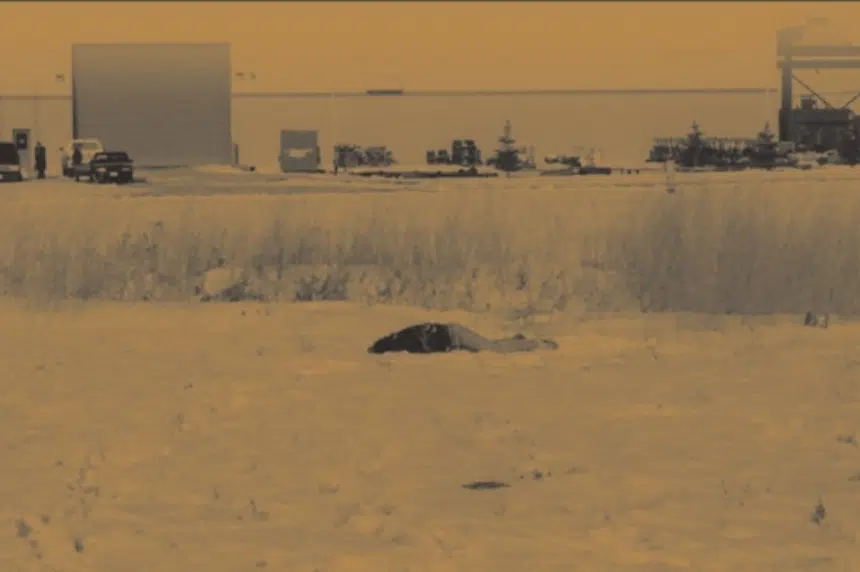Wednesday marks a grim milestone in the history of the City of Saskatoon.
Thirty years ago Wednesday marked the anniversary of the death of Neil Stonechild. The body of Stonechild, an Indigenous man, was found frozen by two construction workers in the northwest section of Saskatoon.
Originally, the Saskatoon Police Service investigated the death and found no evidence of foul play, with an autopsy concluding that Stonechild died of hypothermia.
According to the final report into the inquiry of Stonechild’s death, those initial reports were refuted following “Newspaper reports (which) appeared from time to time setting out the Stonechild family suspicions that the Saskatoon Police Service had not adequately investigated the youth’s death.”
“It was suggested that the two Saskatoon Police Service members who answered the call to the disturbance attributed to Mr. Stonechild had taken him from the scene to the remote area of the city and abandoned him,” the final report reads.
In 2000, the RCMP was instructed to carry out an investigation into Stonechild’s death and other persons who had been found dead in remote locations.
The inquiry into the death of Stonechild concluded in May 2004.
At the time of the inquiry, Les MacPherson was a long-time columnist at the Saskatoon StarPhoenix. He sat through the inquiry, which began sitting on Sept. 8, 2003.
“I covered a lot of stuff, I worked for the newspaper for about 40-some years… there was nothing else I covered that made me feel more like crying than the Neil Stonechild case. Even thinking about it now, my eyes kind of water up. It was so emotional, and I just hope something like that (will) be with us for a long time,” MacPherson told 650 CKOM Wednesday.
MacPherson said he was proud of the role that the StarPhoenix played in the case, saying the police had given up on some of the cases, with the newspaper continuing to plug away on those cases.
“It was just heartbreaking in so many respects. A young man’s life was ended,” MacPherson explained. “For people to be treated like that by somebody who was supposed to be protecting them, is terrible.”
MacPherson said he saw the police commission making an effort in the years following, trying to hire police chiefs that could turn around the service as a whole and move on from the freezing deaths.
The columnist pointed to former police chief Clive Weighill as one who made changes within the force.
“He made crystal clear what (officers) responsibilities were, and it seems to have worked. I think the excellent police force that we have today is largely the making of Chief Weighill,” he said.
In the grand scheme of things, MacPherson said the inquiry made for a “much, much better police force.” At the same time, the impact on Saskatoon’s First Nations community is still felt.
“I don’t think it’s had a significant impact in terms of elevating the lives of First Nations. They still have difficulties, still struggling, still a lot of challenges for them to deal with. And it’s incumbent on the rest of us to help them deal with those challenges,” he said.
“The police have to do their job, they can’t decide whose worthy of good policing and whose not worthy of good policing— we’re all worthy of good policing. We all expect and deserve good policing, whether we’re First Nations or whether we’re the rest of the population. I think that’s happening now.”
The last two police constables who saw Stonechild on the evening of Nov. 24th, 25th in 1990 were Constables Larry Hartwig and Bradley Senger. Both were subsequently fired from the police force.
The current Saskatoon Police Service Chief Troy Cooper sent a statement regarding the Stonechild anniversary to 650 CKOM Wednesday afternoon.
“The Saskatoon Police Service continues to work to build and strengthen relationships and trust with the Indigenous community. Following the inquiry, the SPS implemented all of the recommendations that were directed towards our Service. Further to that, we took additional steps to improve our policies, our technology and our training practices,” the statement reads.
“These steps were all done as further ways to build trust with our community. Some of these steps include the hiring of an Indigenous Recruiting Officer, the installation of GPS tracking and audio/visual capabilities in all of patrol vehicles, and mandatory training to reflect inclusion, equity and diversity. But we recognize that our work doesn’t stop there.”
The statement continues, saying Saskatoon police continues to put the recommendations as a priority, and are continuing to look for other opportunities to enhance the service.
“This includes looking at partnerships around mental health and addictions and supporting community organizations like the Okihtcitawak Patrol Group, a volunteer-driven public safety group,” the statement concludes.











